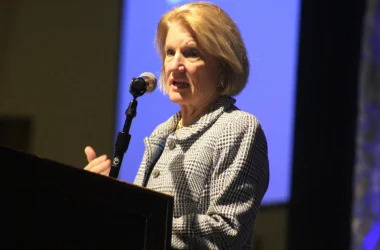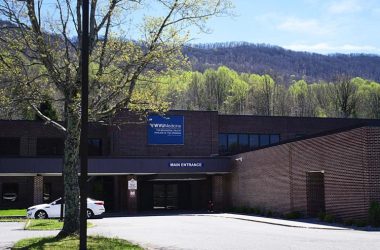By GUISEPPE SABELLA
Charleston Gazette-Mail
CHARLESTON, W.Va. — A Morgan County volunteer firefighter messaged his co-worker in February: “Get ready for a house fire.”

(Gazette-Mail file photo)
First responders soon crashed through the front door of an empty house in Paw Paw to confront the flames.
Alex Gloyd, at the time a firefighter with the Great Cacapon Volunteer Fire Company, later told investigators he set the fire, according to a criminal complaint.
Gloyd, 18, is one of at least nine West Virginians since 2006 to be accused of starting fires after vowing to extinguish them. His case is ongoing.
The act is called firefighter arson, which is considered a rare stain on the industry of more than a million firefighters nationwide. The result is a risk to public safety and the credibility of a firefighter’s department.
A recent case surfaced in mid-June when officials arrested Tammy Wratchford. She served with her husband at the Moorefield Volunteer Fire Department.
Investigators became suspicious after a fire smoldered inside Wratchford’s home in Moorefield for several hours this year, according to a criminal complaint.
She notified her husband, a fellow firefighter, of the smoke inside their home. He then used a department radio to call 911, the complaint states. Wratchford also allegedly tried to burn down the home and collect an insurance payout two weeks earlier.
Authorities arrested Wratchford, 44, on five charges related to arson and fraud. She was released Monday on a $100,000 surety bond, according to the Hardy County Circuit Court.
Wratchford falls outside the surface profile of a firefighter arsonist. Such people usually are men between the ages of 17 to 26, according to studies by the FBI and the South Carolina Forestry Commission.
Neither Wratchford nor Gloyd could be reached for comment Friday.
Convicted arsonists also may have to pay for damages related to injuries or property destruction.
It seems financial pressure led to the allegations against Wratchford. She has outstanding mortgage payments and nearly $388,000 in property insurance, according to the complaint.
However, not every case of firefighter arson is motivated by money.
▪ ▪ ▪
Some firefighters prefer the roar of a fire engine to the grumbles of a slow day at the station.
Boredom is one of several reasons a firefighter might become a fire starter, said Mark Lambert, a retired investigator.
“It was always sort of like the cop that deals drugs — sort of taboo,” he said.
Lambert worked at the Office of the State Fire Marshal for 23 years. He now serves as director of the Extension Fire Service at West Virginia University.
He said job candidates are required to undergo more than 100 hours of training to become firefighters, and many are eager to put those skills to use.
A “hero complex” drives others to commit arson, he said. Some firefighters jeopardized lives just to save them.
In 2009, authorities charged a Berkeley County firefighter after he started a fire and injured a colleague.
It all started when James Blackford, a former volunteer firefighter in Bedington, set a barn on fire, according to Gazette-Mail archives. He was 30 years old.
The fire severely injured Kenneth Ayers, who served as a volunteer firefighter in Baker Heights. Falling debris fractured several of Ayers’ facial bones, and he suffered other serious injuries.
Circuit Judge Gray Silver sentenced Blackford to 20 years in prison. Blackford also was ordered to pay for Ayers’ injuries and the destroyed barn.
Blackford was released in 2015 and discharged from parole the following year, according to an email from Lawrence Messina, a spokesman for the state Department of Military Affairs and Public Safety.
Though Blackford’s intentions were not reported, several factors could have led him to start the fire.
State Fire Marshal Ken Tyree said a combination of six factors motivate arsonists: vandalism, excitement, revenge, crime concealment, profit or extremism.
The motives are the same for everyone, regardless of their job title, he said.
Tyree emphasized firefighter arson is a rare occurrence in a state where approximately 8,500 fire service members work throughout 438 departments.
About 98 percent of the agencies, he said, are volunteer or combination fire departments.
“It would be in comparison to a computer technician committing computer fraud or a banker embezzling money,” he said.
Investigators in West Virginia helped arrest 51 people for arson-related crimes between 2015 and 2016, according to a report from the fire marshal’s office.
Few details are available when it comes to arson data, especially when it comes to a suspect’s occupation, the U.S. Fire Administration said in a 2003 report. There is no solidified way to track the number of firefighter arson cases, which can take years to conclude.
Each case is potentially damaging for the affected department. However, Tyree said most residents are quick to forgive an agency for the behavior of one member.
“We have found people in the community will rally around these departments because they know that it’s not something that’s condoned by the department, nor is it acceptable,” he said.
▪ ▪ ▪
A problem with arson can spread like wildfire if a department loses touch with its members.
Chief Charley Bickford, of the Wilderness Volunteer Fire Department in Nicholas County, described his department as “self-policing.”
The formula for a healthy fire department, he said, is a combination of trust and communication.
“We are a very close-knit family,” he said. “Although it’s an occupation, it’s a little bit more than just a job.”
His volunteers are encouraged to speak up if they notice a change in their peers’ behavior or personalities.
A firefighter might be upset because an employer turned down a request for a pay raise, or he or she could be suffering from the onset of a drug addiction or mental disorder.
Though it’s not required by state law, Bickford’s department uses a background check and 90-day orientation to filter troublesome candidates during the hiring process.
Departments that can’t afford a background check can ask about an applicant’s criminal history on the job application. Bickford’s department does both.
However, he said, a volunteer can change under the pressures of a dangerous, sometimes traumatic job.
Arson, aside from being a symptom of mental illness, can be therapeutic for some people.
Bickford emphasized the importance of extinguishing an issue before it grows. If a firefighter gets away with arson, others might be encouraged to do the same.
“They want to have that excitement, and they want to have that thrill, so they generate their own emergency to respond to,” he said.
He became chief of the Wilderness Volunteer Fire Department about one year ago, and he took its past as a caution.
Investigators accused two of the department’s former firefighters — a father and son — of setting building and brush fires in the Mount Lookout area between 2011 and 2012.
The charges against Charles F. Barnett and his son, Charles L. Barnett, have been dismissed, according to the Nicholas County Circuit Court.
Such accusations may damage the firefighters’ morale efforts and the department’s fundraising efforts.
And qualified candidates could decide to work elsewhere if a department’s reputation is tarnished, Bickford said.
“The way that the community perceives it is: ‘If one firefighter does this, then all firefighters are capable of doing that,’ so therefore we’re all the bad guy,” he said.
When a candidate does apply, every existing member of Bickford’s department has the chance to review the applicant.
Accepted volunteers must then agree to undergo a background check, drug screening or physical and mental evaluation at any time during their membership.
Bickford said his caution aligns with the goals of firefighters nationwide: to protect citizens and fellow firefighters.
“When it comes down to it, that person you’re bringing on might be the only person that you have to go in and fight a fire with,” he said.
See more from the Charleston Gazette-Mail




